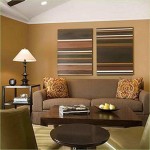Interior Architecture and Design: Unveiling Essential Elements
Interior architecture and design is the art of designing and arranging the interior spaces of buildings to create functional, aesthetically pleasing, and psychologically comfortable environments. It encompasses a wide range of elements, from architectural features and spatial planning to lighting, furniture, and accessories.
Architectural Elements
The architectural elements of a space, such as walls, ceilings, windows, and doors, define its overall form and character. Interior architects and designers consider the relationship between these elements to create visually appealing and functionally efficient spaces. For instance, a high ceiling can make a room feel more spacious or a large window can flood the space with natural light.
Spatial Planning
Spatial planning involves arranging the different areas of a space to optimize its functionality and flow. Interior designers use various techniques to divide and connect spaces, including partitions, furniture arrangements, and circulation paths. They consider the intended use of each space to create a cohesive and efficient layout.
Lighting
Lighting plays a crucial role in creating the ambience and mood of a space. Interior designers use a combination of natural and artificial light to achieve different effects. Natural light can provide a sense of openness and connection to the outdoors, while artificial light allows for precise control of the illumination levels and atmosphere.
Furniture and Accessories
Furniture and accessories add functionality, comfort, and personality to a space. Interior designers carefully select pieces that complement the architectural elements and spatial plan. They consider the materials, colors, and styles of furniture and accessories to create a cohesive and visually appealing interior.
Materials and Finishes
Materials and finishes, such as flooring, wall coverings, and textiles, contribute to the overall look and feel of a space. They can create different textures, patterns, and colors, adding depth and interest to the interior. Interior designers consider the durability, maintenance, and aesthetics of materials when making their selections.
Color and Pattern
Color and pattern play a powerful role in interior design. They can evoke emotions, create illusions of space, and make a statement. Interior designers use color theory and pattern principles to create visually harmonious and engaging spaces.
Soft Furnishings and Textiles
Soft furnishings and textiles, such as curtains, blinds, cushions, and throws, add warmth, comfort, and texture to a space. They can be used to soften architectural lines, provide privacy, and create a cozy and inviting atmosphere.
Sustainability
Sustainability has become an increasingly important aspect of interior architecture and design. Interior designers strive to create spaces that are environmentally friendly and minimize their impact on the planet. They use sustainable materials, energy-efficient lighting, and resource-conserving strategies to promote a healthy and sustainable living environment.

Interior Design Vs Architecture What S The Difference

Should I Study Interior Design Or Architecture The Architects Diary

What Is A Good Interior Design Archdaily

290 Architecture Interior Design Ideas House

What Are The Differences Between An Interior Architect Designer And Decorator Walk Id

Interior Design Woodbury University

Interior Architecture And Design Ba Degree London Metropolitan University

Interior Design Trends That Will Shape The Next Decade Archdaily

7 Elements And Principles Of Interior Design Basic Concepts Foyr

Interior Design Vs Architecture What S The Difference


